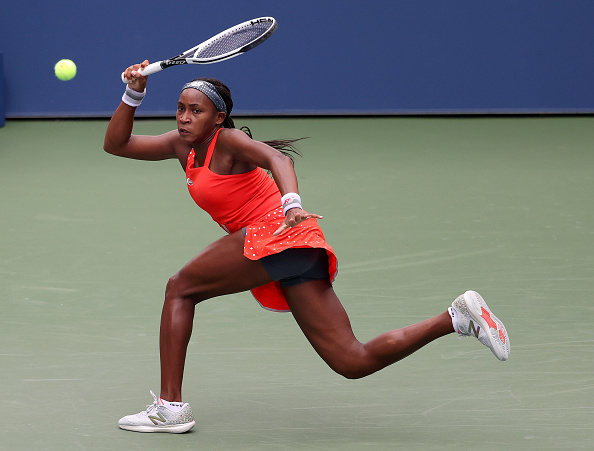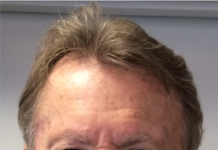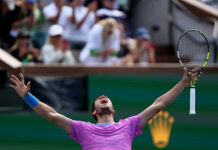Bill Simons
WILL, SKILL AND CLARITY OF PURPOSE: Grand and gracious Mother Wimbledon bathes in tradition. The French Open has a continental swagger. The Aussie Open is happy. The US Open is the raucous, explosive, New-York-loud Slam.
But for all its might, it almost didn’t happen this year. Never has an international sporting event fought, scrambled and scratched so hard to survive. Now it’s the only Slam to have been uninterrupted throughout its history – some 139 years.
But it took incredible will, skill and clarity of purpose. Organizers refused to lose. They were open-minded, communicative and transparent. Rarely have tennis officials (who, as a whole, have been said to be turf-conscious, flat-footed and shortsighted) – been so adept.
The USTA not only had to deal with all the feisty stakeholders (as the players, agents, broadcasters and balkanized organizations are euphemistically referred to), they also had to navigate a daunting maze of local, state and federal bureaucracies.
It wasn’t easy. Even in the end, after an extraordinary, bio-tight bubble had been created, a physio tested positive, Naomi Osaka pulled out of her Western and Southern semifinal match, the semis were then paused, Naomi withdrew from the finals with an injury, Novak Djokovic led a men’s player insurrection to create the Professional Players Tennis Association, that could prove to upset an apple cart or two, and, on the eve of the tourney, France’s Benoit Paire, the No. 17 seed, tested positive for COVID and had to withdraw.
The 1936 Olympics was essentially a mad man’s propaganda extravaganza. The 1968 French Open was played amid an uprising that had shut down Paris. But this year’s US Open, with its myriad moving parts, has been something else – a celebration of determination, perseverance and tennis.
Opening day this year should be up there with the other truly memorable moments in the tourney’s history: Althea Gibson integrating tennis, Arthur Ashe winning the first time it was played as an Open in 1968, the 1978 move from Forest Hills to Flushing Meadows, the riotous John McEnroe-Ilie Nastase match in 1979, Super Saturday in 1984, Jimmy Connors’ 1991 run to the semis, the opening of Ashe Stadium in 1997, the Williams sisters’ 2001 prime time final, Agassi’s classic late-night win over Blake in 2005, Andre’s retirement speech in 2006, kid Jada Clijsters stealing the show in 2009 and the tumultuous Serena-Osaka 2018 final.
There’s still a long way to the finish, but what a start it’s been.
NO GO, COCO: Coco popped out of nowhere last year and took tennis by storm. She made waves at Wimbledon and the US and Australian Opens. The 15-year-old didn’t have a driver’s license, but she had magic. Sue Barker predicted that Coco will break Margaret Court’s record of 24 Slams. Normally the New York crowd would boost Coco. But not today, in empty Louis Armstrong Stadium. Gauff had first-set leads against the Latvian drop-shot artist Anastasia Sevastova, but dropped the first set 3-6. Her forehand and serve were suspect. “It’s in her head. The serve has gone off…She’s completely lost the plot,” said Chris Fowler.
Coco, as a sophomore on the tour, was supposed to thrill us, just like she did as a freshman. She had never lost in the first round of a Slam. Coco is a battler. She fought hard, but ultimately fell 3-6, 7-5, 4-6. Sevastova didn’t gloat. She said, “I wish I played like this when I was 16 – great player.” Coco cried when she fell to Naomi Osaka at last year’s Open. Today she didn’t seem that upset. “I’m just at the beginning,” said the sophomore.
QUOTEBOOK – Parking Lot Edition
“I still need to work on my parking, because it’s so bad.” – Coco Gauff
“The weirdest Open ever.” – Chris Fowler
“We are a global sport; we can reach people across the world. I think it’s important that people use their platform. My take on it is just to continue to use sport to build my voice and make it louder so I can reach more people and create change.” – Coco Gauff
“When you see Naomi Osaka, you see the innocence. When you look at her she’s got a light around her. She’s got such a positive presence. But in the last two years, she’s got convictions.” – Chris Evert
“Internal tennis politics can be a terrific cure for insomnia, but anything that puts Djokovic on the opposite side of the net to Federer and Nadal is a shot of espresso.” – Christopher Clarey
“I didn’t play the French Open because [I played] World TeamTennis…[The French] just didn’t seem to be worth it. The money was crap, and we were treated like second-class citizens, so, you know, why bother?…You also have to remember that…how many majors you won were not that important during that time.” – Martina Navratilova
GO FIGURE: There are 24 of the top 100 WTA players missing and five of the top ten. That’s the fewest since 1975. Twelve of the men’s top 100 are missing. Christopher Clarey noted, “In 1976, the Australian Mark Edmondson won the Australian men’s singles with a world ranking of 212. In 1978, Chris O’Neil, also an Australian, won the women’s title with a world ranking of 111.”
PAIRE’S PAL DEFENDS BENOIT: Many like to get hotel rooms on upper floors – nice views. But during a pandemic? Maybe not. Adrian Mannarino had close contact with his fellow Frenchman Benoit Paire and now he is under intense, unbending restrictions. He has to walk up and down seven flights of stairs to get to his room. Mannarino admitted he played cards with Paire and he wasn’t sure if they had been six feet apart. He insisted that Paire had followed all the protocols. Adrian, who next plays Jack Sock, admitted he is “exhausted mentally.” He added that he felt sorry for Paire and said, “The last thing I want is to be dangerous to others.”
ALPHA AMERICAN MALES: Unlike the last few years, American men outshone the women somewhat today. Although Reilly Opelka fell to David Goffin, Taylor Fritz, Jack Sock, Mitchel Kruger, Taylor Fritz, Brandon Nakashima, USC’s Stevie Johnsom (who beat John Isner) and UCLA grads Maxime Cressy and Marcus Giron all won their battles. The men were 7-5, while the the US women were 6-9, with wins by CiCi Bellis, Jen Brady, Allison Riske, Madison Brengle, Ann Li and Jessica Pegula who won in a third set tiebreaker.
EVERYONE SHOULD FEEL SAFE: In the Western and Southern final Sunday, Milos Raonic may have lost for the eleventh straight time to Novak Djokovic, but in the awards ceremony he offered this impactful comment: “It’s been a tough few months…We’re very lucky up in Canada that every single person walking on a street can feel safe. And I hope there is some serious change that goes on through the US, and that every Black man, woman, and child can feel safe in their own community on the street.”
JUST WONDERING: What’s better, having Hawkeye calling all the lines or having the human element of linespeople, who have jobs?
GHOST TOWN: The USTA is wisely trying to humanize the vast, imposing and essentially peopleless Billie Jean King National Tennis Center. In the big plaza, they’ve installed beach chairs, cabanas, putting greens and basketball hoops near the huge fountain. “We’re inundated with games,” said Jo Konta. But in the summer heat, few are taking part. “It’s a ghost town out there,” said Novak Djokovic.
BOTTOMS UP: During a key fifth-set tiebreak, Uruguayan Pablo Cuevas slipped, but still managed to hit a winner while almost being on his butt. Cuevas was serving for the match, but Sock came back and won in the fifth-set tiebreak.
NO REGRETS: Borna Coric caught COVID-19 when he played the controversial Adria Tour in his Croatian hometown. He told Inside Tennis that he had no regrets, and noted that, at the time, there were no cases in Croatia, but, “We got loose and made some mistakes.”
ALLASTER CAPTURES THE MOMENT: In a remarkable interview, first-year tournament director Stacey Allaster reflected on the US Open with ESPN. She said the top priority continues to be “the continuation of keeping everyone safe and healthy…It’s pretty surreal to look out here. It’s really happening. This is where the US Open belongs…We’re here because New Yorkers fought the virus day in and day out. Their dedication, all the first responders, they’ve given us this opportunity. Now the world watches the largest event in the world since the global pandemic began. No one ever thought this would happen. So I’m incredibly inspired by this opportunity to see these amazing 365 athletes from 60 countries.
“We’ve been guided through this whole process by science…[The Open’s science consultants] got it right. We’re only here because of them. We can figure out the rest of the tennis stuff.”
Asked about current events, she replied, “We have a massive stage worldwide [to say] that we need equality and social justice around the world, and very much in this country. The USTA needs to make tennis look like America, and we can use this platform to advocate for racial justice and equality for all, just like we have done.
“We are in the Billie Jean King National Tennis Center, and we have Arthur Ashe Stadium and the Althea Gibson statue. Tennis has always had amazing champions who have advocated for mankind. This is another moment in the history of our sport…I’m pretty inspired. I’ve spent my career breaking a few barriers, standing on the broad shoulders of Billie Jean King, Chrissie and Martina. Because of them, I have this opportunity. But there is more to be done for all of mankind.” Chris McKendry then told Stacey, “You are the perfect person in the perfect position right now.”




















